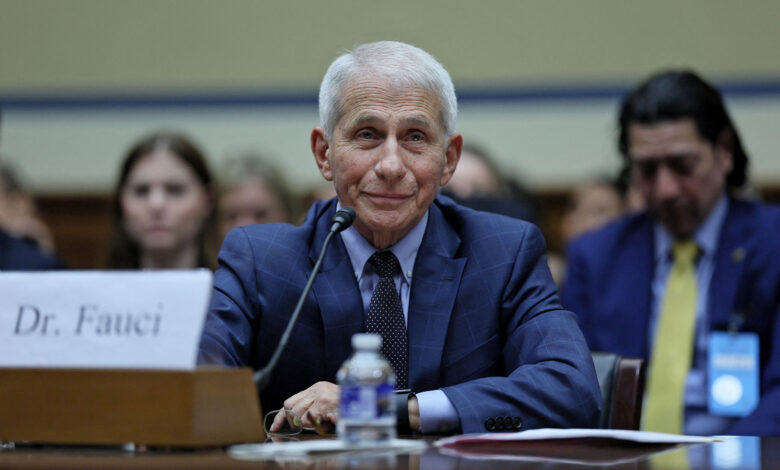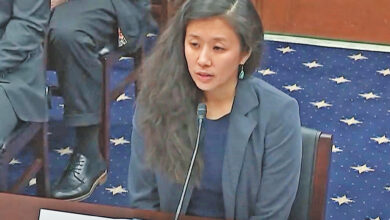Partisan cover-up of the COVID-19 pandemic leaves us exposed to the next outbreak

Imagine if a novel virus killed 20 million people and half of America’s politicians actively downplayed questions about where it came from.
Yet that’s what some members of Congress did Monday.
Rep. Debbie Dingell (D-Mich.) suggested that bringing Dr. Anthony Fauci, the former director of the National Institute of Allergy and Infectious Diseases, before the House subcommittee investigating the origins of COVID-19 was a charade.
“The evidence today points to COVID-19 having originated from an animal market,” declared Rep. Kathy Castor (D-Fla.).
They and others did not bother to ask how the National Institutes of Health evaded an Obama-era moratorium on gain-of-function research — a ban enacted out of concern that a lab leak could cause a pandemic.
Nor did anyone ask Fauci about a 2018 experiment his division conducted, in which NIAID researchers tried to infect bats with Wuhan coronaviruses at the NIH’s Rocky Mountain Laboratories.
Why were US taxpayers funding research on Wuhan coronaviruses in Montana?
We still don’t know.
Ironically, some of the greatest clues to the origins of COVID-19 have emerged from US government documents.
The Wuhan lab’s 2018 DEFUSE grant was a cookbook for genetically engineering COVID-19.
Yet federal officials refused to make the details public until a brave whistleblower did so.
There is overwhelming circumstantial evidence of the US government’s cozy relationship with the Wuhan lab through EcoHealth Alliance.
But this information emerged via whistleblowers and FOIA requests, not because Fauci and other federal employees were forthcoming.
During the recent congressional testimony of Dr. David Morens, Fauci’s right-hand man, we learned that NIAID scientists worked hard to conceal communications between Fauci and external virologists.
At one point, emails revealed, Morens boasted that he learned how to delete messages after a FOIA request had been filed to make them public. “So we’re safe,” he concluded.
Safe from what?
One FOIA-revealed document described secret meetings among top US virologists who, on Feb. 1, 2020, told Fauci they believed COVID-19 came from a lab.
Days later, those same virologists published a scientific “study” in Nature, a major science journal, concluding definitively that the pathogen was not lab-generated.
When questioned before the House in January, Fauci claimed he “did not recall” key details more than 100 times.
Yet on Monday, several members of the House subcommittee had no questions for him about dangerous gain-of-function research — even though it’s still going on.
Earlier this year, a Chinese lab published a new virus manipulation experiment, and two years ago Boston University researchers alarmed government officials when they reported they had made a COVID virus strain more lethal.
How can we seriously prepare for the next pandemic without properly investigating how the last one started — and putting a halt to the type of experiments that clearly produced COVID-19?
This should be the least partisan issue in the country.
But Fauci has emerged as a partisan figure aligned with the Democratic Party.
At Monday’s hearing, when Rep. Jill Tokuda (D-Hawaii) mocked the Great Barrington Declaration, an alternative to the pandemic lockdown regime, Dr. Fauci chimed in, asserting it was a flawed strategy.
But neither mentioned the clear data that Sweden, which used the Great Barrington approach, had far fewer deaths per capita than the United States suffered — a searing indictment of our COVID-19 policy.
Fauci apologists are conveniently retreating to the position that we will simply never know the origin of COVID-19.
We should therefore stop investigating the cozy relationship between the US government and the Wuhan lab, they say.
But the entire COVID-19 pandemic was most likely avoidable.
To actually prevent a future pandemic, a modicum of humility from Fauci and his fellow advocates for risky gain-of-function research is the necessary first step.
Marty Makary MD, MPH is a professor at the Johns Hopkins School of Medicine and author of the forthcoming book “Blind Spots: When medicine gets it wrong and what it means for our health.“




